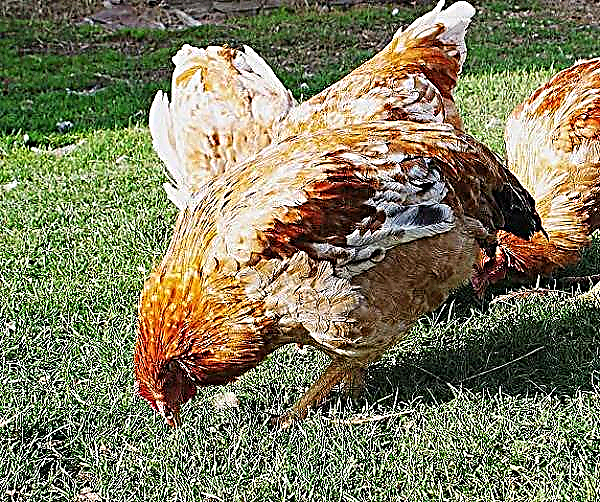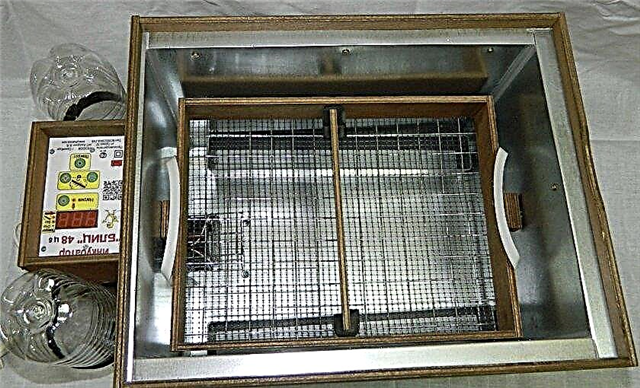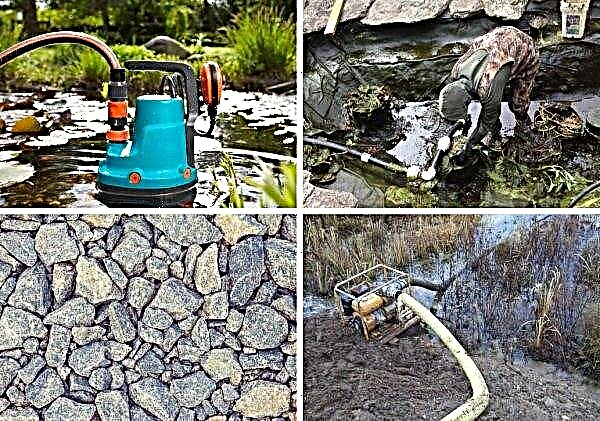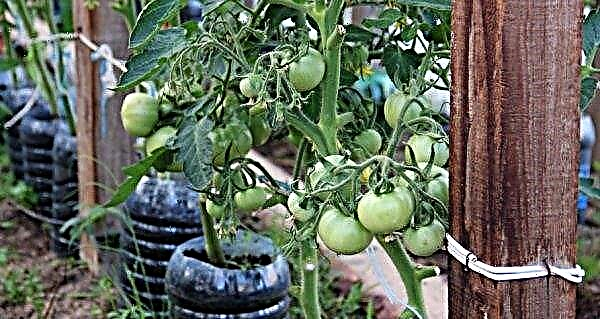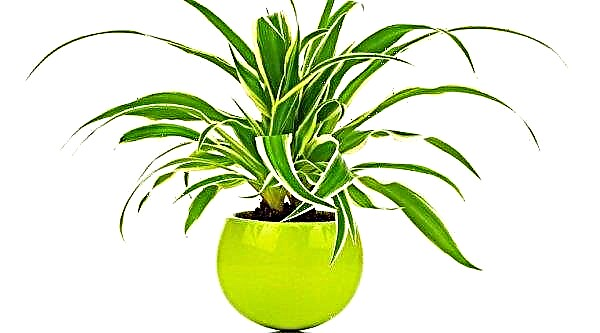Among a large number of the most diverse violets, the violet with the unusual name Ice Rose stands out. She admires her beauty and rare decorativeness. How to contain this flower at home will be discussed in our material.
Botanical description of the plant
Violet Icy rose belongs to the Gesneriaceae family, the genus Saintpaulia is hybrid. This is an artificially bred flower, the result of a long selection work.
Violet is characterized by large white flowers with cherry blotches with semi-double and double petals framed by a wavy fringe of yellow-green tone.
It is worth noting that when the temperature changes, the color of the petals changes. At + 20 ° С the petals are of a usual white color, and at a temperature of + 26 ° С and higher the cherry color dominates, only the middle and edges remain white. What is especially interesting: each new inflorescence has its own shades in the color of the petals.
The leaves are large (in an adult violet up to 13 cm in length), a green grassy shade with wavy edges. They are located around the stem, creating a rich outlet from several layers. Over time, the leaves seem to be stacked on top of each other in layers - the top layer on the bottom. The socket is large, about 40–45 cm in diameter.
Violet blooms 9 months after planting. The flowering period is long - up to 10 months, followed by a short dormant period of 1-2 months. From one peduncle, from two to four buds, which create a luxurious wreath, can bloom in turn.
Did you know? Among the ancient Gauls, violet was considered a symbol of modesty, innocence and shyness.
House growing conditions
In order for the Ice Rose to please its beauty as long as possible, it needs to create the appropriate conditions.
Video: review of violet varieties ice rose
Lighting
Lighting should be good, long-lasting (10-14 hours) and diffused, but not obscured. As an option - the use of diffusing curtains. In winter, to compensate for the lack of natural light and increase the duration of daylight hours, you can use a fluorescent lamp located 20-25 cm above the top of the flower. The optimal location of the Ice Rose indoors is southeastern and eastern windows.
Important! Bright sunshine or direct sunlight can cause burns on the leaves of the violet, so excessive sunlight should be avoided.
Temperature and humidity
The optimum temperature range for this violet is + 16 ... + 28 ° С, however, in order for the flower to bloom, a temperature range of + 20 ... + 26 ° С is required. At a temperature below the minimum allowable, the plant stops growing, at too high a flower dries and withers.
Recommended air humidity is 50-60%. In case of extreme heat or working heating appliances, the moisture level near the flower should be increased by installing a container with violets on a pallet with moss or wet pebbles.
Did you know? Violet has anti-inflammatory and disinfectant properties. Violet infusion is useful for colds, kidney and stomach ailments.
Care Tips
Caring for the Ice Rose is not particularly difficult, but adhering to certain rules is still necessary. Let us dwell on this in more detail.
Watering
There is no strict watering schedule. Violet is watered as necessary - when the topsoil dries by 1.5–2 cm. For irrigation, clean, settled water at room temperature (+ 20 ... + 25 ° C) is used.
Watering can be done in two ways:
- To the ground. In this case, you need to make sure that the leaves do not get wet and the water does not get inside the flower’s outlet, as this can provoke the process of decay of the stems of Saintpaulia.
- Through the pallet. With this method, the pot is immersed in water and through the drainage holes the roots of the plant are quickly saturated with moisture. Upon completion of irrigation, the tank is positioned so that excess water can drain through the drainage holes.

Top dressing
The first top dressing is carried out not earlier than two months from the moment of planting or transplanting the flower. Fertilizers are applied in dissolved form with watering at least once a month.
To violet bloomed profusely, you should adhere to the optimal fertilizer schedule:
- The first spring nitrogen fertilizer - 2 months after planting or transplanting a plant.
- After 14 days - fertilizing with nitrogen and potassium.
- Every 1.5–2 weeks until the transition of the senpolia to a state of rest - the introduction of potassium-phosphate fertilizers.
Important! With sudden changes in temperature in the room, top dressing is not carried out — it can harm the plant.
Pruning
By the age of 2.5 years, an icy rose begins to peak in beauty, after which an elongated trunk grows in the flower, which cannot be hidden during transplantation. By the age of 3, the violet flowers become smaller, due to the overgrown stepchildren, the rosette takes on a sloppy appearance. These are signs of old age violets. In this case, the flower needs to be rejuvenated. Do this by pruning the plant. Cut off the top of the outlet, which is then rooted in water or soil. The remaining part is usually disposed of.

Transfer
Icy rose is transplanted at the age of 1 year, in the future this process is repeated every 2 years. The most favorable period for transplantation is April and May.
A planned transplant is carried out in order to replace depleted and caked soil with a more fresh and nutritious one.
In order to preserve the root system of the flower as much as possible, the transplant is done before irrigation, by the method of transshipment.
Preparatory work:- A suitable pot is prepared in advance: a medium-sized container, so that after planting the leaves of the plant go beyond its edges only half. An appropriate soil mixture is also being prepared, which can be purchased at specialized stores.
- 2-3 days before transplanting, the new substrate should be moistened with a small amount of water.
- Before the transshipment, a drainage layer and a small layer of fresh substrate are laid at the bottom of the new tank.

Directly transplant is carried out as follows:
- Having placed the pot on a solid and even surface, you should lightly tap on the walls of the container or, having carried out a knife along the inner walls of the pot, peel off the soil.
- Holding the plant between the index and middle fingers, the flower is carefully carefully removed from the pot together with the earthen lump. If the flower cannot be removed from the upright position, then the pot is turned over and the procedure is repeated.
- After removing the plants from the tank, they inspect its root system. Sick and rotten roots are removed.
- From the earthen coma formed around the roots of the flower, the old drainage layer is removed and the upper layer of the old soil is removed.
- Carefully place the plant in a prepared pot.
- The space between the walls of the tank and a lump of soil is covered with a loose and moist substrate to the upper leaves.
You will be interested to get acquainted with other varieties of violets:
How to propagate at home
Propagated Ice rose vegetatively - leaves.
In order to propagate this violet at home, you need to cut a leaf with a petiole from the second row of the outlet, then dip it in a transparent glass with boiled water and wait for the formation of roots 1 cm long. After that, the leaf is transplanted into a special loose substrate for senpolia. You can use another method: cut the leaf (or peduncle) immediately put into the ground, burying it by 1.5–2 cm.
Important! The soil in which the sprout is placed must contain baking powder — vermiculite and perlite. This will saturate the substrate with useful minerals, and also increase its porosity and friability.
Possible growing difficulties
Growing at home the Saint Rose of the Ice Rose, you should be prepared for the fact that it will be attacked by pests.
Consider the most dangerous of them and ways to deal with them:
- Spider mite. With the naked eye, it is usually invisible. Appears on old, dried leaves. Sign - white cobwebs are barely noticeable on the leaves. If there are few affected leaves - they are removed, with a large lesion - an insecticidal treatment of violets is performed.
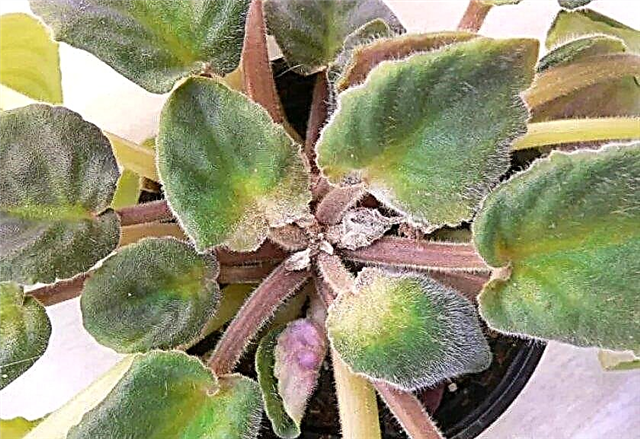
- Thrips. Very small elongated parasites that fly from flower to flower. Often fall into the house with poplar fluff and street flowers. If found on a flower - treat the leaves and stalk with Fitoverm solution.

- Aphid. The method of entry is cut street flowers brought into the house, as well as keeping the violet in a too warm, insufficiently ventilated room. To prevent damage, do not place a vase with flowers brought near the Saintpaulia, and strictly observe the temperature regime of the flower. With the defeat of violets, insecticides should be used with which the lower parts of the leaves are sprayed, since aphids usually live in such secluded places.

- Powdery mildew. Signs of the disease are: at the initial stage - hard-to-remove white coating on the leaves and petioles, with the progression of the disease - ulcerative damage to all parts of the flower, uneven surface of the leaves, and in the final stage - the cessation of growth, weakness and death of the plant. The cause of the disease is high humidity and low temperature in the room, excess nitrogen in the soil, poor care. At the first signs of the disease, you need to inspect the flower and remove the affected leaves. Then you should treat the plant with a fungicide ("Fundazole", "Topaz") and place it in a dark and warm place.
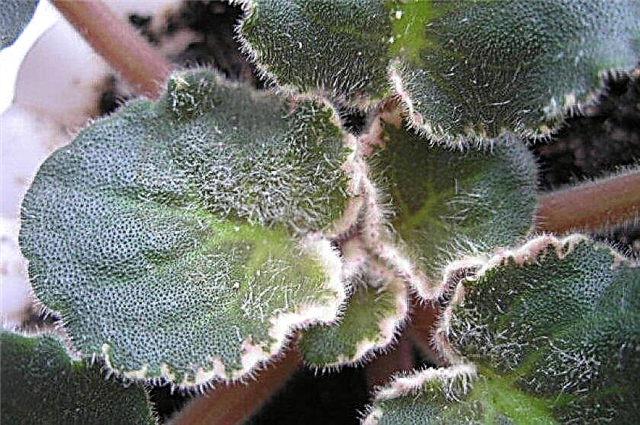
- Rust. If it is present, small yellowish spots form on the outer surface of the leaves, and a yellow rash on the reverse side. The cause of the disease is a shortage of sunlight and, as a result, reduced immunity of violets. The affected leaves are removed, the plant is treated with the Fitosporin-M preparation, after which it is temporarily isolated from other plants.
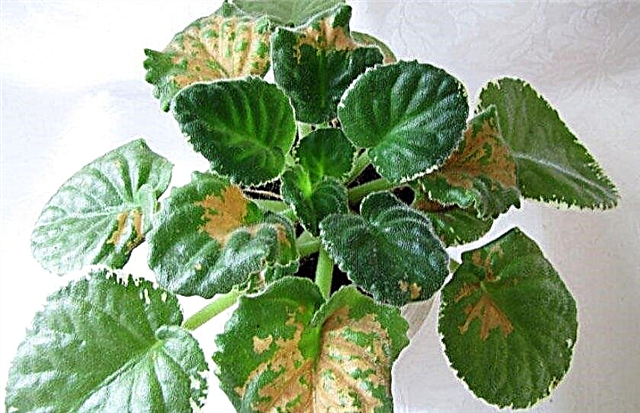
- Root decay. Symptoms: a change in the appearance of the leaves, their loss of elasticity, sagging, their apparent dustiness. The cause of the disease is the excessive humidity of the substrate, caused by frequent watering with cold water, especially in cool rooms. As a treatment, the biofungicide “Fitosporin” is used, which is added to water for irrigation or, alternatively, spraying with this drug can be carried out.








